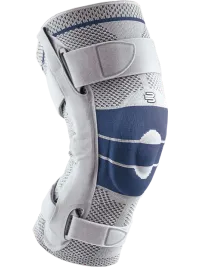Latest Advancements in Pain Relief Techniques
Advancements in medical science continually offer new hope and innovative methods for pain relief. Chronic pain, affecting millions globally, often diminishes quality of life and can lead to significant emotional and psychological stress. The latest breakthroughs in pain relief techniques provide new options for those suffering, making pain management more effective and personalized. Here are some of the most recent advancements in pain relief:
1. Neuromodulation Techniques
Neuromodulation has emerged as a promising area in pain management, offering targeted relief through electrical stimulation.
- Spinal Cord Stimulation (SCS): SCS involves implanting a device that delivers electrical impulses to the spinal cord, interrupting pain signals before they reach the brain. Recent advancements include high-frequency SCS, which provides relief without the tingling sensation associated with traditional methods.
- Peripheral Nerve Stimulation (PNS): Like SCS, PNS targets specific peripheral nerves. Miniaturized, implantable devices now allow for less invasive procedures with improved outcomes.
- Dorsal Root Ganglion (DRG) Stimulation: Targeting the DRG, a cluster of nerves near the spine, this technique offers pain relief for conditions like complex regional pain syndrome. DRG stimulation provides targeted pain relief with fewer side effects.
2. Regenerative Medicine
Regenerative medicine focuses on repairing or replacing damaged tissues, offering new hope for long-term pain relief.
- Platelet-Rich Plasma (PRP) Therapy: PRP therapy involves injecting a concentration of a patient's own platelets to promote healing of injured tendons, ligaments, muscles, and joints. New research suggests PRP can effectively reduce pain and improve function in conditions like osteoarthritis and tendonitis.
- Stem Cell Therapy: Stem cells have the potential to develop into different types of cells and repair damaged tissues. Advances in harvesting and applying stem cells have shown promise in treating degenerative joint conditions, spinal injuries, and chronic tendinopathies.
3. Pharmacological Innovations
New drug formulations and delivery methods are enhancing pain management with fewer side effects.
- Biologic Drugs: Biologic therapies, such as monoclonal antibodies, target specific pathways involved in inflammation and pain. Medications like TNF inhibitors are used for rheumatoid arthritis, providing targeted relief with fewer systemic effects.
- Nanomedicine: The application of nanotechnology in pain management has led to the development of nanoparticles that deliver drugs directly to the site of pain. This targeted approach reduces the required dose and minimizes side effects.
- Extended-Release Formulations: Advances in extended-release medications ensure more consistent pain control. New formulations of opioids, NSAIDs, and other pain medications release slowly over time, reducing the frequency of dosing and improving compliance.
4. Minimally Invasive Procedures
Minimally invasive techniques continue to evolve, offering effective pain relief with shorter recovery times.
- Radiofrequency Ablation (RFA): RFA uses heat generated by radio waves to destroy nerve tissues responsible for transmitting pain signals. Recent advancements in imaging and guidance techniques have made RFA more precise and effective for conditions like chronic back pain and arthritis.
- Cryoneurolysis: This technique involves freezing peripheral nerves to interrupt pain transmission. It is used for post-surgical pain, nerve entrapment syndromes, and chronic pain conditions. New cryoneurolysis devices offer greater precision and longer-lasting relief.
- Vertebral Augmentation: Procedures like vertebroplasty and kyphoplasty involve injecting bone cement into fractured vertebrae to stabilize the spine and relieve pain. Recent innovations include the use of balloons to create space before cement injection, improving outcomes and reducing complications.
5. Integrative and Holistic Approaches
Combining traditional and alternative therapies offers a comprehensive approach to pain management.
- Acupuncture and Dry Needling: Advancements in these techniques include electroacupuncture, which uses electrical stimulation to enhance the effects of traditional acupuncture. Dry needling targets trigger points in muscles, providing relief for myofascial pain syndromes.
- Bioelectronic Medicine: This emerging field uses electrical signals to modulate the body's nervous system. Devices that stimulate the vagus nerve, for instance, are being studied for their potential to reduce inflammation and chronic pain.
- Mind-Body Therapies: Techniques like mindfulness meditation, yoga, and cognitive behavioral therapy (CBT) are being integrated with conventional treatments. New research supports their effectiveness in reducing pain perception and improving quality of life.
Conclusion
The latest advancements in pain relief techniques provide new hope and options for those suffering from chronic pain. From cutting-edge neuromodulation and regenerative therapies to innovative pharmacological solutions and minimally invasive procedures, these advancements are transforming pain management. Integrating traditional methods with holistic approaches further enhances the ability to manage pain effectively, improving patients' overall quality of life. As research and technology continue to evolve, the future of pain management looks increasingly promising.
This article is provided courtesy of Leland Berkwits, MD.

